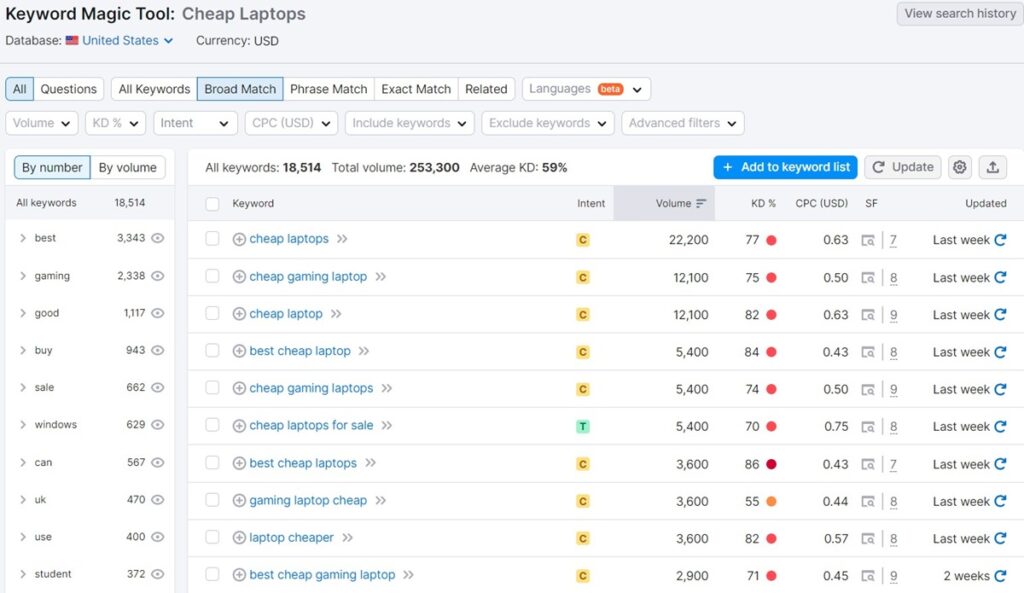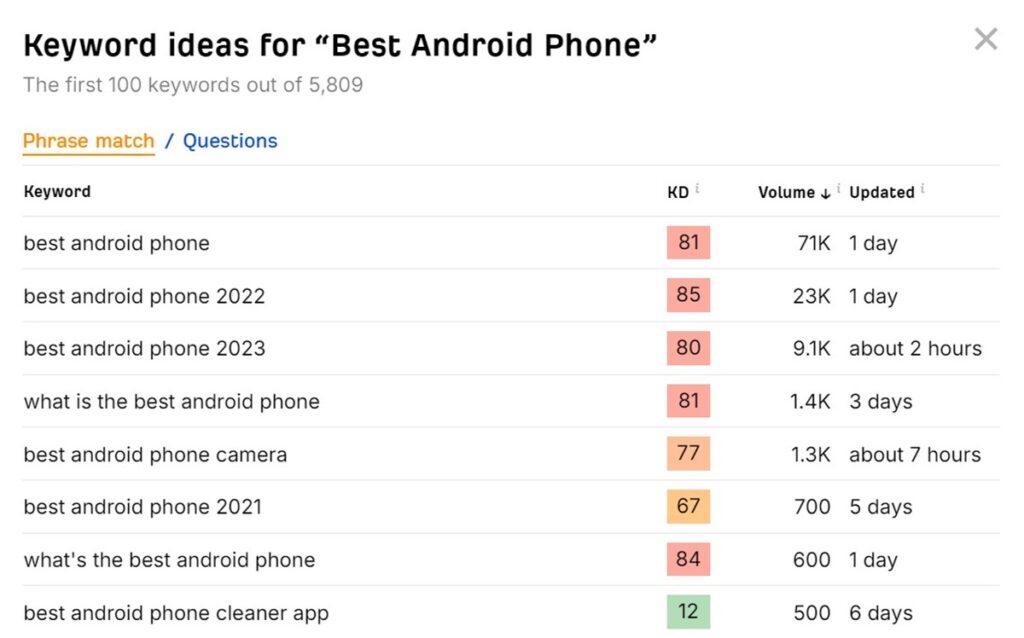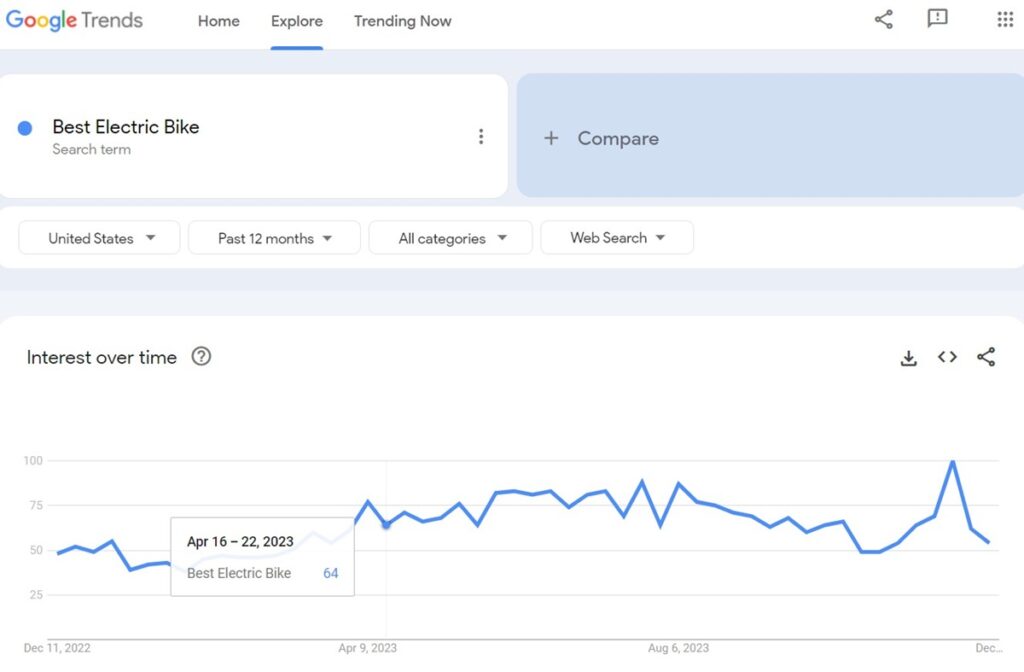*This article was last updated on 10/12/2023
One of the biggest mistakes that new SEOs make is targeting popular keywords. They’re almost only possible to rank. Aiming for low hanging fruit keywords is an excellent way for newer blogs to gain a foothold in search rankings.
What Are Low Hanging Fruit Keywords?
Low hanging fruit keywords are keywords that have lower competition yet still have a reasonable search volume. This characteristic makes these keywords easier for less well-established blogs to start having their content ranked.
They’re essentially keywords specific enough to have a clear intent but don’t require excessive resources to boost. Because these keywords are often pretty specific, they are also typically long-tail or niche-oriented.
The advantages of targeting low hanging fruit keywords are plentiful:
- They were earlier to rank for.
- You get pretty targeted traffic.
- It’s highly cost-effective.
- They help build momentum for SEO.
- High conversion potential.
1. Use the Semrush Keyword Magic Tool

Semrush is one of the most recognizable names in SEO tools. The package comes as a complete suite, but some features are available to use for free. One that can help find low hanging fruit keywords is the Semrush Keyword Magic Tool.
Semrush’s Keyword Magic Tool is designed to streamline the keyword research process. It works with an extensive database of over 20 billion keywords. That means it can cover almost any niche you want.
Here’s how to use it to find low-hanging fruit keywords
- Starting Your Search: Entering a broad keyword related to your niche into the Keyword Magic Tool. This serves as your starting point.
- Explore Keyword Variations: The tool then displays a plethora of keyword variations. Look for variations with a high search volume but lower keyword difficulty scores.
- Analyzing Keyword Metrics: Pay attention to the metrics provided, such as the number of searches, trend patterns, and the Keyword Difficulty Index.
Pros
- Extremely easy to use
- Frequently updated database
- Includes keyword difficulty and recommendations
Cons
- Free use limited to 10 searches per day
2. Unlimited Research With Ahrefs Keyword Generator

Ahrefs is another reputable brand in the SEO tool space. I’ve used their paid plan for several years, and it’s comprehensive and easy to handle. The problem is that Ahrefs seems to be getting less accurate as time progresses.
Nevertheless, the good news is that the Ahrefs Keyword Generator is free to use. Unlike Semrush, you’re not limited to a specific number of daily searches. That makes it a low-hanging fruit keyword goldmine, especially for new SEOs.
Here’s how it works:
- Access the Tool: You don’t need an account for this, just head to the Ahrefs Keyword Generator page and enter your keyword.
- Select Country: The tool allows you to choose the country where your keyword research is most relevant. That should be your target market. For example, if you want to rank in Canada, then select Canada from the dropdown.
- Perform the Search: Hit the Find Keywords button, and you’ll see a popup with a list of related keywords, volume, and difficulty. You can also click the questions link to see related questions.
Pros
- Ahrefs also has a pretty comprehensive database.
- The user interface is more structured.
- Data is taken from multiple sources.
Cons
- Keyword difficulty and volume can be quite inaccurate.
3. Free Google Trends and Google Keyword Planner

Google Trends and Google Keyword Planner are invaluable, free tools provided by Google. Each serves a unique purpose. However, with a little effort, you can combine them to form a somewhat effective tool that can help find low hanging fruit keywords.
Google Trends is for identifying trending topics and understanding user interest over time. That means it can estimate the volume for your desired keywords. It also gives more information, such as related keywords and recent interest.
Google Keyword Planner is part of Google Ads service. You must sign up for a free account to use the keyword planner. Search here to see how much advertisers are paying for those keywords.
As a rule of thumb, the higher the prices, the more challenging they will be to rank.
Here’s how it works together:
Step 1: Start with Google Trends
- Access Google Trends.
- Input a general topic relevant to your niche. This can be a broad keyword or a subject area.
- Look for patterns, spikes, or consistent interest in the topic. Pay special attention to seasonal trends, geographical interests, and related topics and queries.
Step 2: Refine with Google Keyword Planner
- Go to the Google Keyword Planner.
- Select Discover New Keywords.
- Type the keywords you identified in Google Trends. Next, select the targeted countries and hit the Get Results button. You’ll see a long list of data that you can sort by volume, cost, and so on.
- When analyzing the results, ensure you pay attention to keywords with a decent search volume and competition level. Try to avoid targeting keywords with higher than medium competition.
Pros
- Both tools are free to use.
- You can target more than one country at a time.
- Competition level is quite accurate.
Cons
- Google Trends doesn’t show search volume numbers.
- Trends can also be misleading.
Extra Tips for Low Hanging Fruit Keyword Research
A lack of time is something that all SEOs face. That’s why it can be tempting to take shortcuts, especially for “less productive” activities like research. Resist the temptation to cut corners here since keyword research is the foundation for SEO success.
To increase your success in finding excellent low hanging fruit keywords:
- Leverage Multiple Sources: Don’t rely solely on a single tool. Where possible, compare insights from multiple tools – you will be surprised at how conflicting the results can sometimes be.
- Properly Identify Search Intent: Analyze the context in which keywords are used. Are they for informational, navigational, transactional, or commercial purposes?
- Consider Long Tail Keywords: These are longer, more specific phrases with typically less competition but highly targeted.
- Analyze Competitors: Look at what keywords your competitors are targeting. Tools like Ahrefs and SEMrush can provide insights into their keyword strategies.
- Geographical Targeting: Use the geographical data from Google Trends to tailor your keywords and content to specific regions or local audiences. Remember that localization also applies to the content that you create.
Conclusion
Life can be very difficult for new SEOs and even harder for new blogs. However, everyone must start somewhere. The key to success is knowing the disadvantages that new websites face and working on the easiest way to get your content to rank.
That often means targeting low hanging fruit keywords – the ones that don’t have massive search volume. Hitting these keywords will help you lay the foundation to build some authority by gaining traffic and, hopefully, some solid backlinks.
Frequently Asked Questions
Google Keyword Planner data is generally accurate. It’s sourced directly from Google’s search engine statistics. However, remember that the figures are still estimates and can vary based on several factors.
Google Trends is not designed to predict future trends. It shows how interest in a topic has changed over time, which can help spot emerging trends. However, predicting future keyword popularity requires more complex analysis.
Keyword research is not a one-time task but an ongoing process. Ideally, you should perform keyword research regularly, at least once a month. This helps you work with newer data and stay updated on user interests.
Long-tail keywords are often a good choice due to their specific nature and typically lower competition. However, they are only sometimes the best choice. The key is to balance specificity with search volume and relevance.
Google Keyword Planner provides a competition metric. However, it’s primarily geared towards advertisers and reflects the competition in paid rather than organic search. To assess organic competition you’ll need a more purpose-built tool like Semrush.
